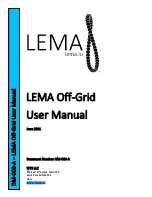
8
9
INSTALLATION AND OPERATION MANUAL SOLAR MODULES Q.MAXX-G2 – Q CELLS
INSTALLATION AND OPERATION MANUAL SOLAR MODULES Q.MAXX-G2 – Q CELLS
Specifications
MODULE TYPE
MOUNTING
OPTION
POSITION OF
CLAMPS* [MM]
TEST LOAD
PUSH/PULL** [PA]
DESIGN LOAD
PUSH/PULL** [PA]
SAFETY
FACTOR
Q.MAXX-G2
CL1 / CL3
250 - 450
5400/2400
3600/1600
1.5
FB1 / FB2
380
IP1
-
CL1
0 - 250
450 - 550
2400/2400
1600/1600
CL2a (with rails) /
CL2b (without rails)
0 - 300
CL4
0 - 300
CL5
short side: 0 - 250
long side: 300 - 450
4000/4000
2670/2670
Ä
The below mounting options are only possible under certain conditions.
MODULE TYPE
MOUNTING
OPTION
POSITION OF
CLAMPS* [MM]
TEST LOAD
PUSH/PULL*** [PA]
DESIGN LOAD
PUSH/PULL*** [PA]
SAFETY
FACTOR
Q.MAXX-G2
IP2
-
2400/2200
1600/1470
1.5
*
**
***
Distance between outer edge of module and middle of the clamp.
Loads according to IEC 61215-2:2016 and UL 61730.
Test procedure according to IEC 61215-2:2016 and UL 61730. Mounting options do not fulfill the requirements of the standards.
ATTENTION
Ä
The loads in the table are related to the mechanical stability of the solar modules. The mechanical stability of the mounting
system including clamps has to be evaluated by the system supplier. The Q CELLS listed test load values were determined
with the following clamp parameters: clamp width = 40 mm and clamp depth = 10 mm. The system installer is responsible for
the determination of location-specific load requirements.
Ä
Ensure, that the subconstruction does not touch the junction box (even under load). Ensure that the clamps or insertion profiles
etc. do not touch the glass (even under load).
Ä
Ensure, that the connection cables of the junction box do not run between laminate and mounting rails.
Ä
Ensure, minimum support depth of 15 mm on the back side of the module for IP1, IP2, CL2b, CL3, CL4 and CL5. Ensure
minimum support depth of 10 mm on the front side of the module for IP1 and IP2.
Ä
CL1, CL2a and CL3 with rails: Ensure that module frame is fixed directly on the rail of the substructure (no spacer allowed
between the module and substructure).
Ä
Module bend under loads. Therefore, sharp objects (e.g. screws) must not be mounted near the module backside.
Ä
Use M8 corrosion-proof screws and washers (diameter ≥ 15.8 mm or ≥ 0.62 in) for FB1 and FB2 mounting.
Module Selection
For detailed key electrical data, please refer to the actual data sheet
referring to the relevant Module (available at www.q-cells.com).
Ä
For maximum energy yields, mismatches of specified elec-
tric current (I
MPP
) of more than 5 % should be avoided for all
modules connected in series.
Safety Factor
During normal operation, a module may generate a greater current
and / or higher voltage than that determined under standardised
test conditions. Please use a safety factor of 1.25 for the following:
•
Calculating the voltage measurement values (V
OC
) of components
•
Calculating the current measurement values (I
SC
) of conductors
•
Sizing of control systems connected to the outlets of the solar
modules
Ä
Please follow the valid national guidelines for the installation
of electrical systems.
Ä
Please refer to the latest revision of AS/NZS 5033 (includ-
ing all relevant amendments) and the Clean Energy Council
Guidelines (for Australia).
Series Connection
Connection of modules in series is only permitted up to the
maximum system voltage as listed in the applicable data sheet
of all the relevant modules to be installed.
Ä
Take into account all possible operating situations and all
relevant technical norms and regulations when designing the
system. It has to be ensured that the maximum system voltage,
including all necessary safety margins, is not exceeded.
Ä
Take the voltage limit of the inverter into account when
determining the maximum number of modules in the string.
Parallel Connection
Modules may be damaged by the occurrence of reverse currents
(caused by module defects, ground leaks, or defective insulation).
Ä
Ensure that the maximum reverse current load capacity indi-
cated in the data sheet is met.
In order to limit reverse currents that may occur, we recommend
using the following safety options:
1)
Layout with a limited number of
parallel connected strings :
Please refer to the latest revision of AS/NZS 5033 (including all
relevant amendments) for parallel string overcurrent protection
requirements.
2)
Layout with string fuses :
Place fuses for each string of modules at the plus and minus ends.
Use gPV-fuses according to IEC 60269-6. Observe the maximum
permitted number of strings as indicated in the specifications
provided by the respective string fuse manufacturer and the
technical guidelines.
NOTE!
When installing different product versions, the lowest minimum
permitted reverse current load capacity applies.
Inverters
Inverters with or without transformers may be used.
2 PLANNING
2.3 MOUNTING OPTIONS
2 PLANNING
2.4 ELECTRICAL LAYOUT





























